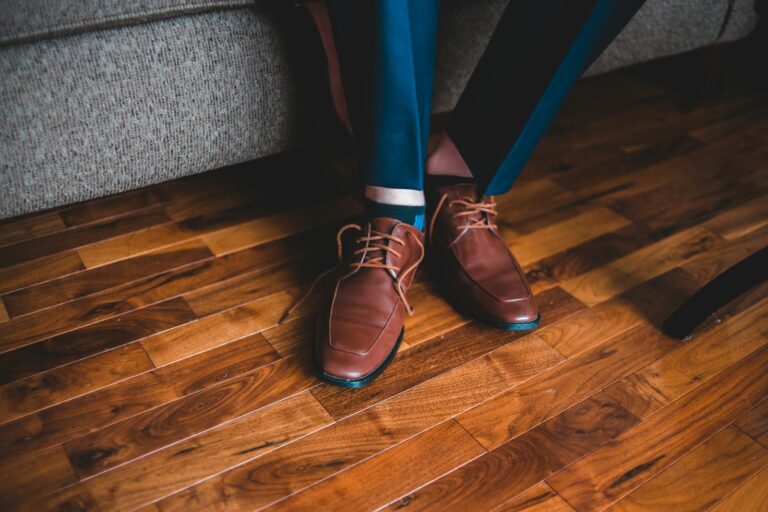For centuries, hardwood floors have graced homes with their natural beauty and timeless appeal. While traditional smooth-planked floors remain popular, a growing number of homeowners are embracing the unique charm of hand-scraped hardwood flooring.
This meticulous technique, practiced by skilled artisans, creates distinctive textures and patterns that elevate the aesthetic of any space. This article will delve into the advantages of hand-scraped hardwood floors, showcasing how they can transform your home into a haven of sophistication and enduring value.
The Beauty of Distinctive Texture
The hallmark of hand-scraped hardwood flooring lies in its textured surface. Unlike machine-sanded planks that boast a uniform finish, hand-scraped floors display a captivating array of subtle variations.
Each plank bears the unique mark of the artisan’s tool, resulting in a captivating tapestry of ridges, grooves, and subtle depressions. This distinctive texture adds depth and character, transforming ordinary floors into a mesmerizing work of art.
The interplay of light and shadow across the textured surface creates a captivating visual dynamic, adding dimension and warmth to any room.
Hand-scraped floors go beyond mere aesthetics; they offer a tactile experience that engages all the senses. The textured surface provides a delightful sensation underfoot, a welcome contrast to the smooth, cold feel of tile or polished concrete.
This tactile appeal adds a sense of warmth and comfort to the home, making it a more inviting and welcoming space. Furthermore, the textured surface helps to obscure minor imperfections in the subfloor, creating a seamless and elegant finish.
Durability and Longevity
Beyond their aesthetic appeal, hand-scraped hardwood floors boast remarkable durability and longevity. The textured surface is inherently more resistant to scratches and dents than smooth-planked floors. The ridges and grooves act as natural camouflage, making minor blemishes less noticeable.
This inherent durability makes them ideal for high-traffic areas, ensuring that your floors will withstand the test of time. Hand-scraped floors are also incredibly resilient to fading and discoloration, retaining their vibrant hues for years to come.
The longevity of hand-scraped hardwood flooring is further enhanced by their inherent ability to be refinished multiple times. Over time, as your floors accumulate wear and tear, they can be sanded down and refinished, restoring their original beauty and extending their lifespan. This versatility allows you to adapt your flooring to changing styles and preferences, ensuring that your investment remains current for decades to come.
A Timeless Investment
Hand-scraped hardwood floors represent a timeless investment that will enhance the value of your home for years to come. Their enduring beauty, durability, and versatility make them a coveted feature among potential buyers. In an ever-changing real estate market, hand-scraped hardwood floors provide a sense of enduring quality that resonates with discerning buyers.
Choosing hand-scraped hardwood floors is a testament to your commitment to quality and craftsmanship. It signifies a desire for a home that reflects your refined taste and appreciation for the finer things in life. By investing in hand-scraped floors, you are choosing a lasting legacy that will be appreciated by generations to come.
Conclusion
Hand-scraped hardwood floors are more than just flooring; they are a statement of refined taste and enduring style. Their unique texture, inherent durability, and timeless appeal make them an exceptional investment that will enhance the beauty and value of your home for years to come.
As you consider flooring options for your home, remember the captivating allure of hand-scraped hardwood floors. They offer a harmonious blend of elegance, durability, and timeless charm, creating a space that is both beautiful and enduring.
Frequently Asked Questions
1. How does the hand-scraping process affect the overall cost of the flooring?
While hand-scraped hardwood flooring may be more expensive upfront compared to standard machine-sanded floors, the added cost is often justified by its superior durability, aesthetic appeal, and resale value. The extra investment represents a commitment to quality and craftsmanship that translates into a lasting value for your home.
2. What are the best wood species for hand-scraped flooring?
Hardwood species like oak, maple, hickory, and walnut are particularly well-suited for hand-scraping. Their density and grain patterns lend themselves beautifully to the textured finish. While softer woods like pine can be hand-scraped, they may be more susceptible to dents and scratches over time.
3. How do I maintain the beauty of my hand-scraped hardwood floors?
Hand-scraped hardwood floors require regular cleaning and maintenance to preserve their beauty. Vacuuming regularly and using a damp mop with a pH-neutral cleaner is recommended. Avoid harsh chemicals and abrasive cleaners that can damage the finish.
4. What are the potential drawbacks of hand-scraped hardwood floors?
Hand-scraped flooring can be more difficult to clean due to the textured surface. Deep cleaning might require specialized tools and techniques. Additionally, the unique texture can sometimes make it challenging to place furniture or rugs without potential movement or shifting.
5. Can hand-scraped hardwood floors be installed over existing flooring?
The feasibility of installing hand-scraped hardwood floors over existing flooring depends on several factors, including the type and condition of the existing subfloor. It is always best to consult with a qualified flooring contractor to determine the best approach for your specific situation.


